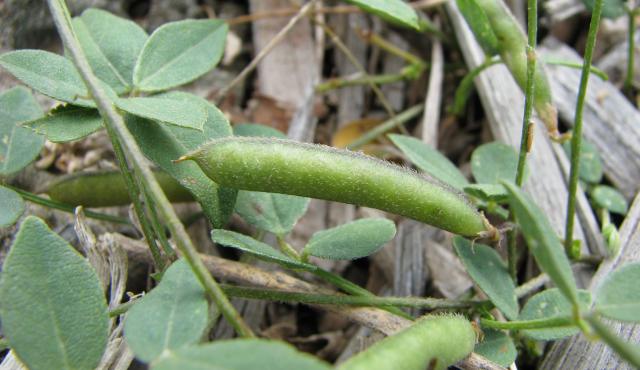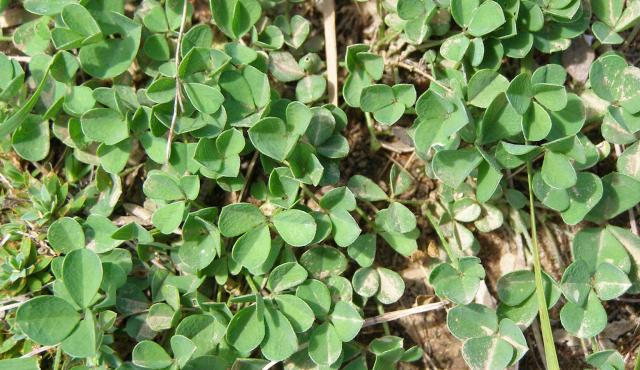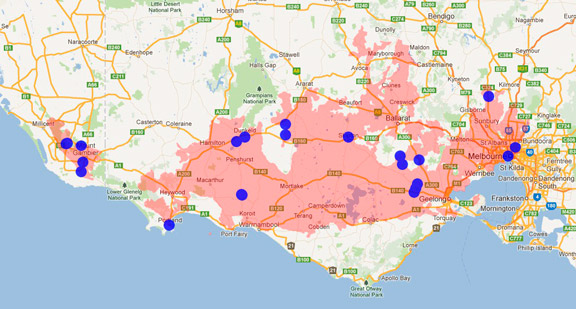A range of teacher professional learning programs will be developed to accompany the Biodiversity of the Western Volcanic Plains online outreach...




Clover Glycine
Glycine latrobeana
Perennial, growing from a woody rootstock. Reasons for its threatened status include its occurence on land that is suitable for agriculture, and its palatability to domestic and native animals. Its seeds remain dormant and viable in the soil for many years, and may germinate after disturbances such as fire.
| Details | Description |
| Type | Scrambler or Climber |
| Group | Pea |
| Identifying Characteristics | |
| Distinctive Features | Clover-like leaves. |
| Life Form Group | Scrambler or Climber |
| Life Form Codes | Scrambler or Climber (SC) |
| EVC types | EVC 68: Creekline Grassy Woodland |
| Native Status | Native to Australia |
| Taxonomy | |
| Phylum | Charophyta |
| Class | Equisetopsida |
| Order | Fabales |
| Family | Fabaceae |
| Genus | Glycine |
| Species | latrobeana |

Distribution maps indicate current and historic locations where species have been sighted.
Source: Atlas of Living Australia
| Endangered Status | |
| DEPI Advisory List | Vulnerable |
| FFG Act | Listed as threatened |
| EPBC Act | Vulnerable |
The conservation status of species is listed within Victoria and Australia.
The Department of Environment and Primary Industry (DEPI) Advisory List consists of non-statutory advisory lists of rare or threatened flora and fauna within Victoria.
The Flora and Fauna Guarantee Act 1988 (FFG Act) lists threatened species in Victoria. Under the Act, an Action Statement is produced for each listed species.
The Environment Protection and Biodiversity Conservation Act 1999 (EPBC Act) is the Australian Government’s key piece of environmental legislation, listing nationally threatened native species and ecological communities.



